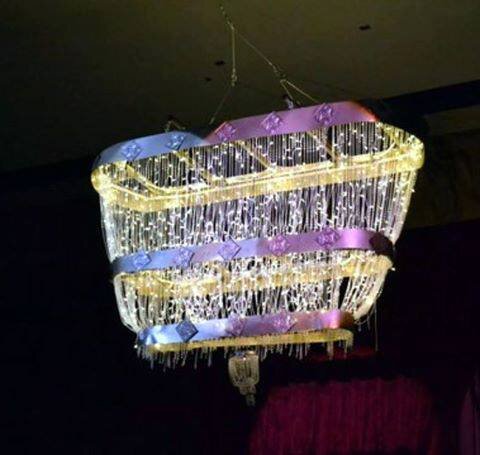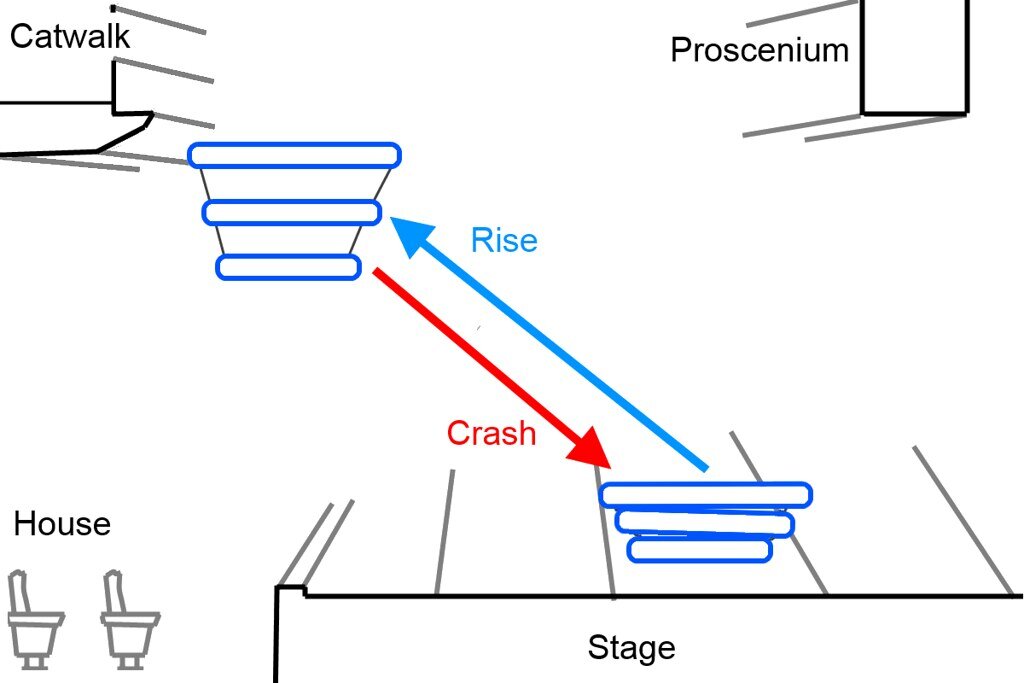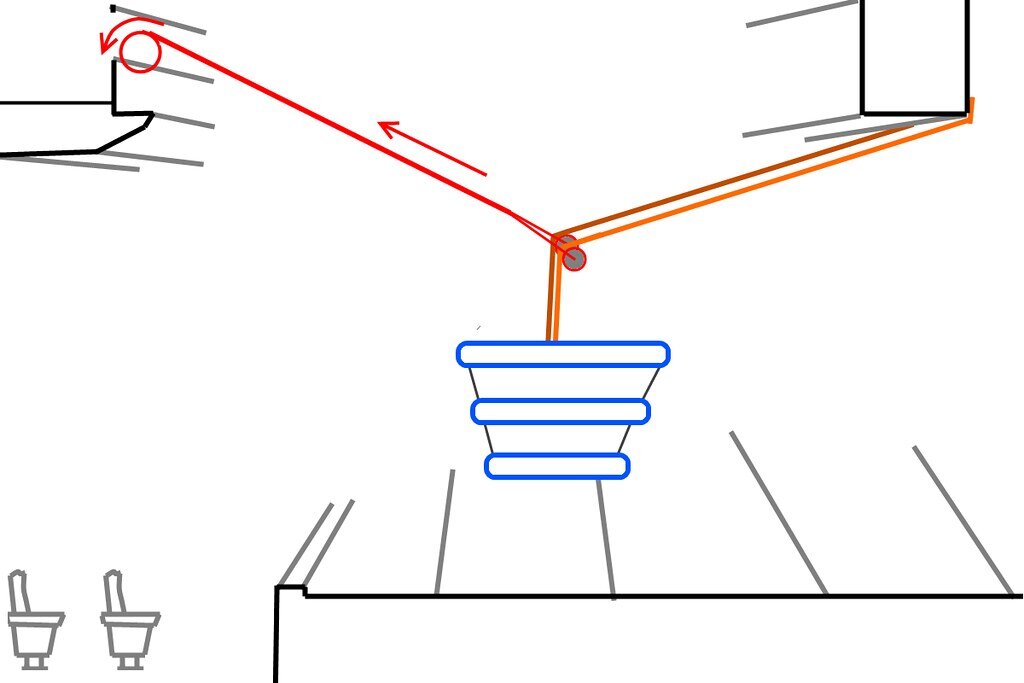Phantom of the Opera: Chandelier Rigging
In sophomore year of high school, and for my first major project in theatre, I was tasked to build and rig a chandelier that would be able to safely and repeatably rise from center stage in an upward diagonal direction to a position just above the front edge of stage, and subsequently violently, but again safely, crash down and return to its original position onstage.
I'm writing this four years later and the documentation on it I'm able to gather is limited, so I'm just going to do my best here.
The chandelier was constructed in three tiers connected together by cables. This way, it was able to collapse when on the stage. The effect of the chandelier unfolding as it rose from the stage was pleasing. The inside was lined with strands of beads and icicle lights.
For the rigging, the chandelier was hung by two cables from just behind the proscenium. Using two cables prevented the chandelier from twisting whilst in flight, and also acted as a double safety. A winch positioned on that catwalk would be connected by a single cable to the pair of cables using a Y split and two pulleys, as shown below.
Power was run to the chandelier through a cable that ran alongside one of the two cables from behind the proscenium, through a third pulley, and down to the chandelier.
Initially, the winch I had planned to use was similar to a trailer winch used for something like a boat. In testing it with a chandelier substitute weighted bucket that we named Bertha, we found that the winch was unsuitable. The locking mechanism clicked very loudly in its ascent, the descent was quite slow and unexciting due to the gearing, and most importantly, the rapid movement of the handle shook the winch violently in such a way that I wasn't confident that it would remain safely mounted.
Rather than the geared winch, we decided to construct our own hefty medieval style winch. It was essentially a spool with six handles on each side, with which the user operate the chandelier.
This was mounted between the upper batten and the upper handrail of the catwalk using some pipes and cheeseboroughs. An additional set of pipes was able to pivot on the handrail and interfere with the winch. This acted as a hard brake, and it also held the chandelier up.
Here's a crude video of the chandelier falling. It's about all I could find, but you can make out the workings of the system.


